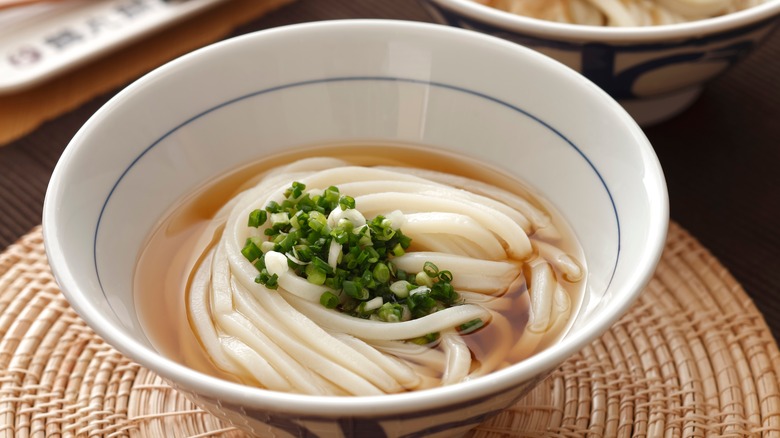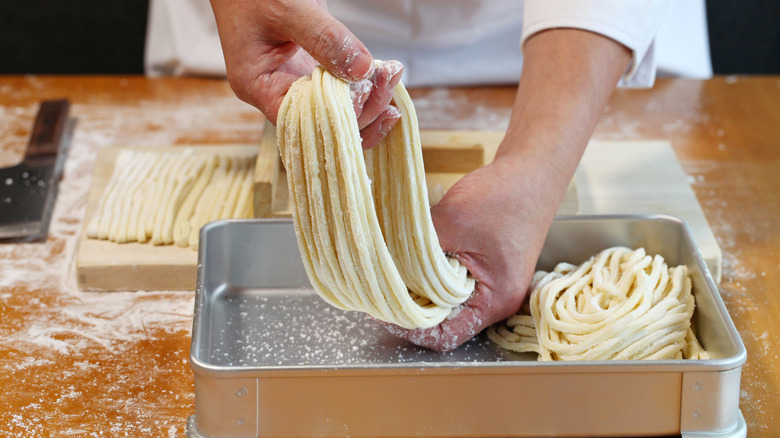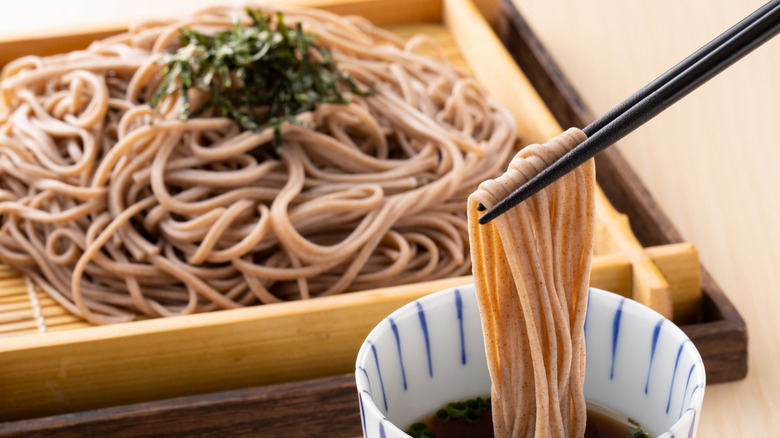For The Chewiest Homemade Udon Noodles, Simply Step On The Dough
Udon, a staple of Japanese cuisine, is a kind of wheat noodle that is commonly served in a flavorful dashi broth (primarily made with kombu seaweed and/or cured skipjack tuna). There is such a large variety of udon dishes that it can be a little overwhelming to figure out where to start. According to Bon Appétit, the key factor in having the perfect udon dish begins with dropping the store-bought dried noodles and making them fresh instead, because nothing beats the texture and quality of noodles made by hand (or foot).
But wait, where do feet come into this? As it turns out, the traditional way of making udon noodles is by wrapping the udon dough in plastic and stepping on it over and over again. This kneading process adds more elasticity to the dough and makes for a springier, chewier noodle. This, of course, is done while wearing socks and after the dough is placed inside a sealable plastic bag for protection.
Why feet?
Now, you may be wondering if you can just use your hands. Well, yes you can. You can even use a pasta machine. The only problem is that you will likely end up making a different, softer textured udon. For the absolute chewiest noodles, you have to put those tootsies to work.
While ramen and pasta can be kneaded by hand, udon dough benefits from much more strength to complete the task correctly. This is why, traditionally, udon chefs used their feet on which they can place the weight of their entire bodies in order to press down as hard as possible.
According to chef Yoko Isassi in an interview with HuffPost, another reason for the foot-pressing method is that, historically, it was the women who were responsible for making noodles in Japan. She notes that pressing out the springy udon dough by hand was difficult, so they switched to standing on their feet. Some even wore weighted backpacks to give their steps a little extra oomph.
How to step into the best noodles
So, how do you make the chewiest, springiest udon noodles? It seems that the first step is using the traditional art of foot-kneading and the rest comes down to how you cook and serve the udon. When cooking udon, you want to be exact. Most udon noodles take around 3 minutes to cook in boiling water, however, you will know for sure that they are done when they start floating. Once they float, get them out quickly because overcooked udon can have a rubbery texture.
Once you've cooked your noodles, you need to decide how to serve them. Udon can be served hot or cold, wet or dry, and even fried. According to James Beard Award-winning chef and cookbook author Andrea Nguyen, if you want deliciously chewy udon noodles, you might want to serve them cold and covered in a chilled dashi sauce to accentuate their chewiness, as heat will soften them. But no matter which udon dish you reach for, from miso pork udon to yaki (stir-fry) udon, remember that the best udon is foot-made!


